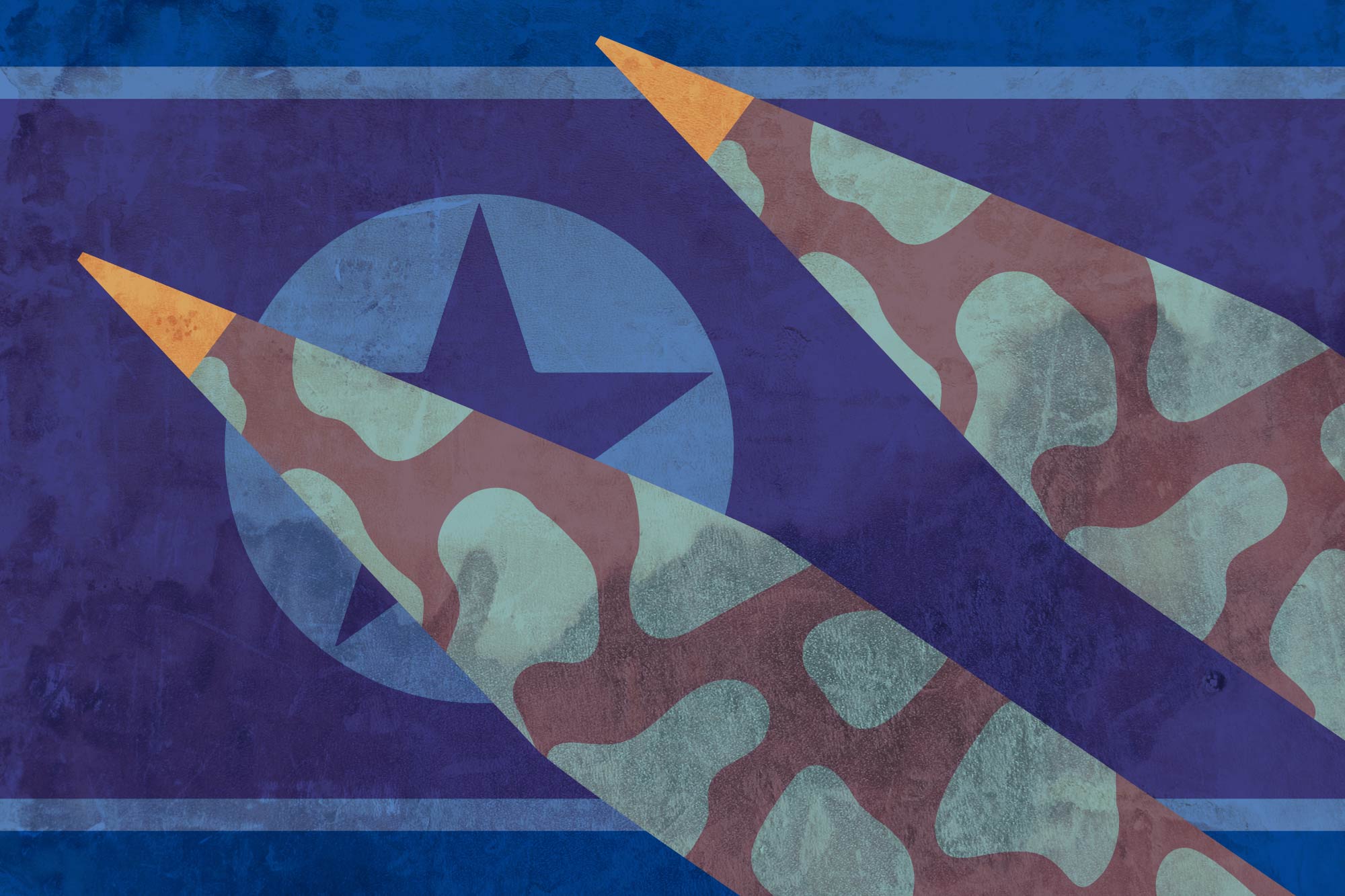As Americans were celebrating Independence Day on Tuesday, news broke that North Korea had successfully tested its longest-range missile to date. While American officials maintain that the brutal regime of Kim Jong Un is still unable to hit the continental U.S. with any type of missile, North Korea’s latest test suggests that it is capable of targeting Alaska.
Since this news came out, speculation has run rampant on whether it would lead to greater tensions or even new hostilities between the United States and North Korea.
UVA Today asked Todd Sechser, an associate professor of politics and expert in international security, to shed some light on the true nature of the North Korean threat and the likely reactions of the international community. Sechser is the co-author of the new book “Nuclear Weapons and Coercive Diplomacy” and his research focuses on nuclear deterrence and military crises in international relations.
Q. What makes the threat of nuclear attack by North Korea different from other adversaries who have developed nuclear technology?
A. The first thing to clarify is that as far as we know, North Korea is not capable of hitting the lower 48 states with a nuclear weapon. What made this missile test on Tuesday so significant was that it was the first time North Korea demonstrated the ability to launch an intercontinental missile. That’s a capability that we didn’t know they had.

Todd Sechser is an associate professor of politics and expert in international security.
That threat comes with a couple of caveats. One is that the missile, even at its best, could only hit parts of Alaska. That’s a significant advancement, but it’s not the same as putting major U.S. cities at risk.
The second caveat is that we don’t know if North Korea can put a nuclear weapon on top of that missile. That requires “miniaturization” of a nuclear warhead, which is no small technical feat. So in that sense, the North Korean threat is incrementally advancing, but it’s not yet at the point where North Korea can hold American cities hostage with nuclear weapons.
This threat is different in some ways because it’s an adversary with new capabilities, but the United States lived in the shadow of another country’s nuclear arsenal throughout the Cold War and continues to do so today. Both China and Russia have the ability to hit American cities with nuclear-armed ballistic missiles. In that sense, there’s nothing new here.
Q. How do North Korean advances compare to the nuclear program in Iran? Why have sanctions been more effective in Iran?
A. There are a couple of key differences. Number one, the United States has been trying a combination of sanctions and diplomacy for more than two decades with North Korea and that just hasn’t worked. The second difference is that, in the case of Iran, the United States had more cooperation from other countries. There are international sanctions against North Korea, but one of the limitations of these sanctions has been China’s reluctance to push the North Koreans too hard. China is North Korea’s top trading partner and it has no interest in pushing the North Korean government so far that it collapses and China ends up with thousands of North Korean refugees on its border.
For those reasons, sanctions have been less effective. North Korea also seems more motivated than Iran. They’ve endured decades of sanctions and continued to push forward.
Q. Is there any “best” option for dealing with North Korea going forward?
A. With North Korea, it’s like lunch at your middle school cafeteria: it’s a menu of terrible choices.
One option is to keep trying to persuade North Korea to limit or to give up its nuclear program with a combination of diplomacy and sanctions. We’ve been trying that for 25 years. It hasn’t worked before and it’s not going to work now.
A second option is a military strike – either a small surgical strike, maybe against nuclear missile facilities, or a broader attack against the North Korean Army. But North Korea has more than a million troops and thousands of artillery guns stationed within 40 or 50 miles of South Korea’s capital city. If a war breaks out, we could be talking about tens of thousands of casualties in and around Seoul in just the first few hours of the conflict. That number would be even higher if North Korea decided to use chemical or nuclear weapons. On top of that, we don’t know if a surgical strike would even work. North Korea has facilities and weapons hidden in caves and mountains, and we don’t know where all its nuclear warheads are. A surgical strike would almost certainly fail to completely eradicate the North Korea arsenal.

The third option – which I think is the most realistic – is to just learn to live with it. For almost 70 years now, we’ve relied on nuclear deterrence to protect ourselves and our allies. This is no time to give up on that strategy. Deterrence has worked against much more capable and much more dangerous adversaries, and I think it can work against North Korea as well.
Q. Coverage of North Korea has dominated the news this week. Is there anything missing from the broader discussion?
A. It’s easy to overreact when North Korea demonstrates a new capability, and I would caution against that. Their technological advancement this week is an important one, but it’s not a game-changer.
The United States has contemplated military action against North Korea for more than 20 years and every presidential administration has decided that a war with North Korea would be far too costly. I would argue that U.S. relations with North Korea over the last two decades have been a striking nuclear deterrence success, not a deterrence failure.
Kim Jong Un has been perplexing in many ways, but he hasn’t shown any sign of being suicidal. Quite the contrary, he has shown himself to be quite calculating. His number one priority is the survival of his regime, and he won’t do anything to jeopardize that. But if he ever believes his regime to be at risk, he might use nuclear weapons to save it. So we have to be careful about backing North Korea into a corner.
While we haven’t been able to stop North Korea from crossing the nuclear threshold and expanding their nuclear capabilities, the primary goal of U.S. foreign policy on the Korean peninsula is to prevent another war between North and South Korea. Nuclear deterrence has been very successful in achieving that goal.
Media Contact
Article Information
July 7, 2017
/content/what-know-about-north-koreas-missile-test-and-threat-it-poses

